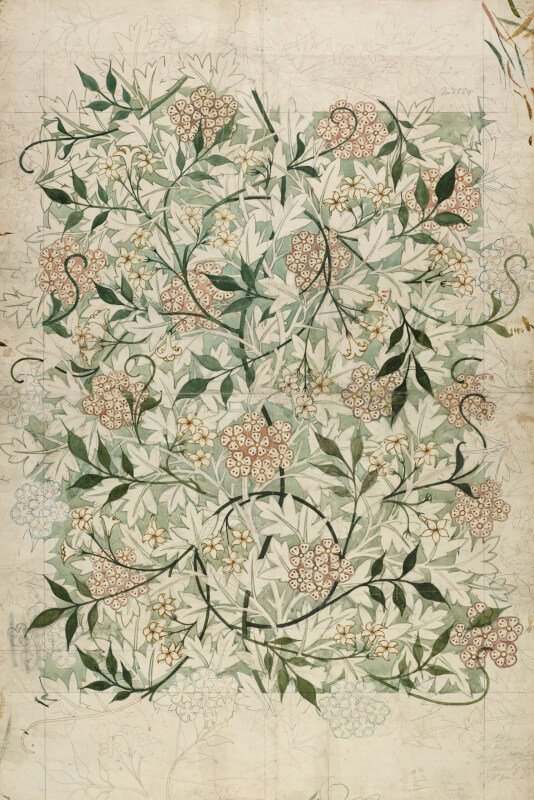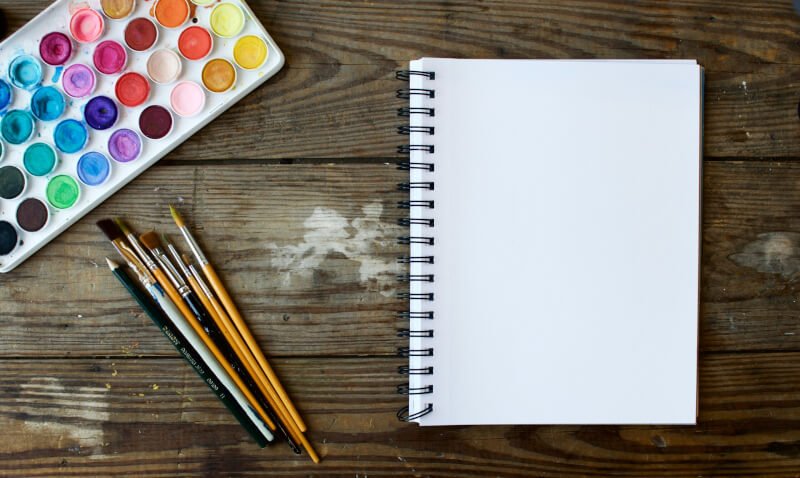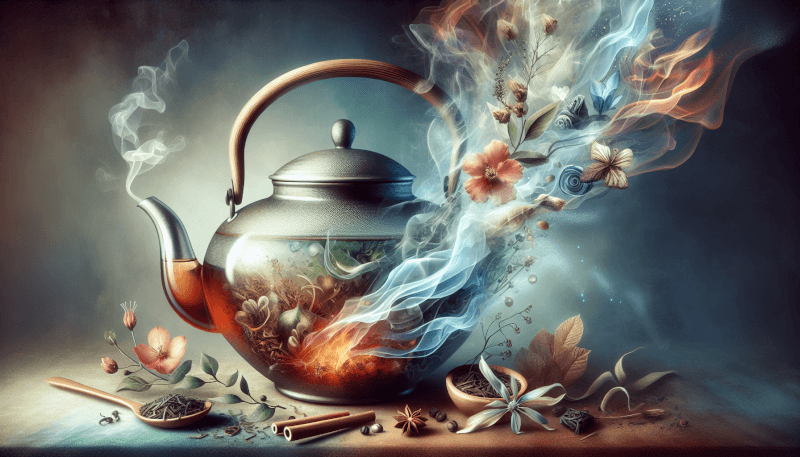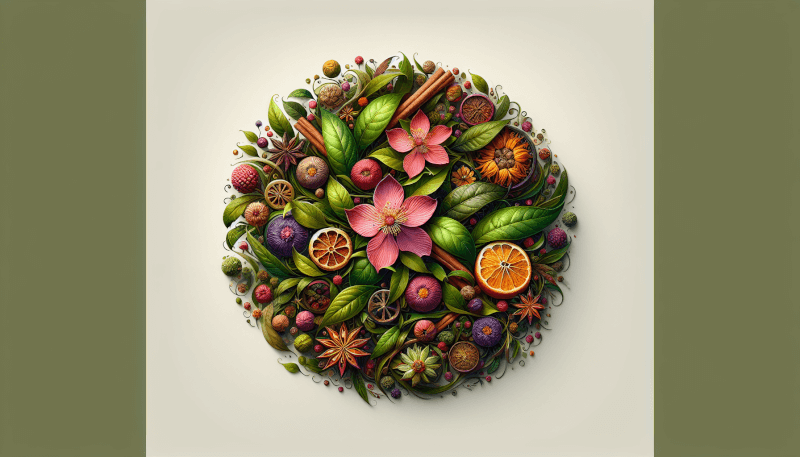Tea lovers, prepare to be transported into a world of delightful scents and flavors as we embark on a journey to understand the art of aroma infusion in tea brewing. Enhancing the humble tea cup with captivating fragrances not only elevates the drinking experience but also unlocks a realm of unique tastes that dance on your palate. In this article, we will explore the secrets behind aroma infusion, how it influences the brewing process, and the enchanting outcomes that await when tea and fragrance are masterfully intertwined. So, get ready to indulge in the aromatic symphony that awaits your senses!
The Importance of Aroma Infusion in Tea Brewing
Tea brewing is more than just steeping tea leaves in hot water. It is an art form that involves the perfect balance of factors to create a truly exceptional cup of tea. One crucial aspect of tea brewing is aroma infusion. Aroma infusion refers to the process of extracting and enhancing the aromatic compounds present in tea leaves, which greatly contributes to the overall drinking experience. By focusing on aroma infusion, you can take your tea brewing to a whole new level and create a multi-sensory experience for yourself and others.
Enhancing the Drinking Experience
Imagine sipping a cup of perfectly brewed tea that fills the air with its enticing aroma. The smell alone can transport you to a different time or place, triggering memories and evoking emotions. Aroma infusion elevates the drinking experience by engaging your sense of smell, which is closely linked to taste. When you take a sip of tea that has been infused with its aromatic compounds, the flavors become more pronounced, providing a richer and more satisfying experience.
Creating a Multi-sensory Experience
Tea has the power to captivate not only our taste buds but also our other senses. Aroma infusion allows us to create a multi-sensory experience by incorporating the sense of smell into the act of drinking tea. The combination of beautiful aromas, vibrant colors, and delicate flavors stimulates our senses, making the entire tea drinking experience more enjoyable and memorable. By focusing on aroma infusion, you can create a symphony of senses that enhances your appreciation of tea.
Factors Affecting Aroma Infusion
To achieve the perfect aroma infusion in your tea, several factors come into play. Each of these factors has an impact on the final result and should be carefully considered when brewing tea.
Tea Quality
The quality of the tea leaves you use is of utmost importance when it comes to aroma infusion. High-quality teas, such as loose-leaf teas, tend to have more complex and intense aromas compared to lower-quality mass-produced teas. Tea leaves that are whole and intact have a higher concentration of aromatic compounds, allowing for a more potent infusion. When selecting tea for aroma infusion, prioritize freshness and opt for premium-grade teas.
Water Quality
The quality of the water you use can greatly affect the aroma infusion in your tea. Ideally, you should use filtered or spring water that is free from impurities and excessive mineral content. Water that is too hard or contains chlorine can interfere with the delicate flavors and aromas of the tea. Using clean, pure water will ensure that the natural aromas are preserved and can fully develop during the brewing process.
Temperature
The temperature of the water used for brewing tea plays a significant role in aroma infusion. Different types of tea require specific water temperatures to maximize the extraction of aromatic compounds. Green teas, for example, are often brewed at lower temperatures to preserve their fresh and delicate aromas, while black teas may be brewed at higher temperatures to bring out their robust and malty aromas. Paying attention to water temperature allows you to control and enhance the aromatic experience of your tea.
Steeping Time
The duration of the steeping process also affects the aroma infusion in tea. Oversteeping can lead to bitter or astringent flavors, overpowering the delicate aromas. Understeeping, on the other hand, may result in a lack of depth and complexity in the aroma. It is important to follow the recommended steeping times for different types of teas to achieve optimal aroma extraction. Experimenting with steeping times can help you find your preferred balance of flavors and aromas.
Teaware
The teaware you use can impact the aroma infusion in your tea. Porcelain or glass teapots, for instance, are often favored for their ability to showcase the colors and aromas of the tea. Clay teapots, such as Yixing pots, are prized for their ability to absorb and enhance the flavors and aromas over time. Choosing the right teaware that allows for proper heat retention and optimal aroma release can greatly influence the aroma infusion in your tea.
Leaf-to-Water Ratio
The ratio of tea leaves to water used during brewing also affects aroma infusion. Too little tea leaves may lead to weak aromas, while too many can result in overpowering flavors. Finding the right balance allows for a harmonious aroma infusion, where the aromatic compounds are present but not overwhelming. Experimenting with different ratios can help you determine the ideal leaf-to-water ratio for your preference.

Choosing the Right Tea for Aroma Infusion
To fully explore the world of aroma infusion, it is important to choose the right type of tea. Different types of teas offer unique flavor profiles, aromas, and experiences. When selecting tea for aroma infusion, consider the following factors:
Different Types of Tea
Each type of tea, whether it’s green, black, white, oolong, or herbal, has its own distinct characteristics. Green teas tend to have grassy and vegetal aromas, while black teas can have malty and robust aromas. Oolong teas often exhibit floral and fruity aromas, while herbal teas offer a wide range of herbal and botanical aromas. By exploring various tea types, you can discover a plethora of aromas that can be infused into your cup.
Flavor Profiles and Aromas
Within each type of tea, there are numerous varieties that display unique flavor profiles and aromas. For example, within the black tea category, you may find teas with notes of chocolate, caramel, or even floral undertones. Paying attention to the flavor descriptions and aroma profiles of different teas can help you select the ones that align with your preferences.
Freshness and Quality
When it comes to aroma infusion, freshness and quality are paramount. Freshly harvested and processed teas tend to retain their natural aromas better than stale or low-quality teas. Look for teas that have been sourced from reputable suppliers and are known for their commitment to quality. The freshness and quality of the tea leaves will greatly impact the aroma infusion and overall tea drinking experience.
Understanding Aromatic Compounds in Tea
To truly appreciate aroma infusion, it is important to understand the aromatic compounds present in tea. These compounds are responsible for the various aromas that can be experienced when brewing and drinking tea. Here are some key aspects to consider:
Volatile and Non-volatile Compounds
The aromatic compounds in tea can be divided into two categories: volatile and non-volatile compounds. Volatile compounds are responsible for the immediate aroma you experience when smelling or tasting the tea, while non-volatile compounds contribute to the overall flavor and aroma that lingers after drinking. Both types of compounds play a crucial role in aroma infusion and should be considered when brewing tea.
Terpenes
Terpenes are a group of volatile compounds found in tea leaves that contribute to their aroma. They are responsible for the floral, fruity, or herbal notes in teas. Different types of terpenes can be found in various teas, giving each tea its unique aroma profile. By understanding the role of terpenes, you can appreciate the diverse aromas present in different teas and explore the nuances of aroma infusion.
Polyphenols
Polyphenols are a group of compounds found in tea leaves that contribute to the overall flavor, color, and aroma of the tea. They are responsible for the astringency and mouthfeel of the tea. While polyphenols are not as volatile as terpenes, they still play a significant role in the overall aroma profile. Understanding the impact of polyphenols can help you adjust brewing parameters to achieve the desired aroma infusion.
The Role of Essential Oils
Essential oils are highly concentrated aromatic compounds that are naturally present in tea leaves. They add depth and complexity to the aroma profile of the tea. Essential oils can be delicate and volatile, so proper brewing techniques are essential to release and capture their aromas. By paying attention to the essential oils present in your tea, you can unlock a world of captivating aromas during the infusion process.
Impact of Processing Methods
The way tea leaves are processed can have a profound impact on the aromas they possess. The oxidation, firing, and rolling techniques used during tea processing can affect the release and preservation of aromatic compounds. Understanding the processing methods of different types of tea can provide valuable insights into the potential aromas that can be infused during tea brewing.

Techniques for Maximizing Aroma Infusion
Now that we have explored the factors that affect aroma infusion and the characteristics of aromatic compounds in tea, let’s dive into some techniques that can help you maximize aroma infusion in your tea brewing:
Proper Tea Storage
Proper tea storage is essential for preserving the freshness and aromas of tea leaves. Tea is sensitive to moisture, light, heat, and odors, so it’s important to store your tea in an airtight container away from direct sunlight and strong odors. By protecting the tea from external factors, you can ensure that the aromatic compounds remain intact until they are released during the brewing process.
Tea Leaf Preparation
Before brewing your tea, proper tea leaf preparation is crucial to ensure optimal aroma infusion. Gently unroll or unfurl the tea leaves to expose their surface area, allowing for better extraction of aromatic compounds. If using tightly rolled teas, such as oolongs, a brief rinse with hot water can help awaken the aromas and flavors before brewing. Taking the time to prepare your tea leaves properly will enhance the aromatic experience.
Preheating Teaware
Preheating your teaware, including teapots, cups, and mugs, can help maintain optimal brewing temperatures and prevent heat loss during the steeping process. By preheating, you create an environment that supports aroma infusion, as the heat is effectively transferred to the tea leaves, promoting the release of aromatic compounds. Preheating also ensures that the tea stays warm for a more prolonged period, allowing you to savor the aromas to the fullest.
Water Temperature Control
Controlling the water temperature is crucial for achieving proper aroma infusion. Different types of tea require specific temperature ranges to maximize the extraction of aromatic compounds without scorching or overpowering the flavors. Invest in a reliable thermometer or kettle with temperature control settings to achieve accurate and consistent water temperatures. By paying attention to water temperature, you can elevate the aroma infusion in your tea.
Steeping Methods
The way you steep your tea can greatly impact the aroma infusion. For some teas, such as delicate green teas, shorter steeping times and multiple infusions can help preserve the freshness and complexity of the aromas. Steeping methods, such as gongfu style or grandpa style, can also influence the aroma extraction. Experiment with different steeping methods to find the ones that best suit the tea type and your personal preference for aroma infusion.
Decanting and Aeration
After steeping, decanting the tea into a separate serving vessel can help release additional aromatic compounds and prevent overextraction. This process allows the tea to aerate, enhancing the aromas and flavors. Pouring the tea from a height can further promote aeration and contribute to a captivating aroma experience. By incorporating decanting and aeration into your tea brewing routine, you can maximize the aroma infusion and create a visually stunning presentation.
Teaware and Infusion Vessels
To fully appreciate aroma infusion in tea, it is important to choose teaware and infusion vessels that enhance the overall experience. Here are some popular options to consider:
Teapots and Tea Kettles
Teapots and tea kettles come in various shapes, sizes, and materials, each offering unique advantages for aroma infusion. Porcelain or glass teapots are commonly used for their ability to showcase the colors and aromas of the tea. Cast iron teapots are known for their heat retention properties, allowing for a consistent brewing temperature. Choosing a teapot or tea kettle that aligns with your brewing style and desired aroma profiles can greatly enhance the aroma infusion process.
Tea Cups and Mugs
The choice of tea cups and mugs can also impact the aroma infusion experience. Thin-walled porcelain or glass cups are often preferred as they allow the aromas to be released and enjoyed more easily. The shape and size of the cups can also influence the concentration of aromas experienced while drinking. Wide-mouthed cups can enhance the perception of aromas, while tall and narrow cups can focus the aromas towards the nose. Experimenting with different cup styles can further enhance your enjoyment of aroma infusion.
Gaiwans and Yixing Clay Pots
Gaiwans and Yixing clay pots are traditional Chinese teaware that offer unique advantages for aroma infusion. Gaiwans, consisting of a lid, a bowl, and a saucer, allow for easy leaf preparation and aroma release. Yixing clay pots, on the other hand, are known for their porous nature, which can absorb the flavors and aromas of the tea over time. Both gaiwans and Yixing pots provide a deeper connection with the tea and can enhance the aroma infusion experience.
Glassware and Infusers
Glassware, such as glass tea infusers or teapots, allows for a visually captivating experience as you witness the colors and aromas of the tea unfolding. The transparency of glass allows you to fully appreciate the beauty and complexities of the tea as it infuses. Glass infusers with built-in filters can also simplify the brewing process, providing a hassle-free way to enjoy aroma infusion.
Specialty Tea Brewing Devices
In recent years, specialty tea brewing devices have gained popularity for their ability to enhance aroma infusion. Devices such as tea aroma cups, which have an additional chamber for capturing and inhaling the aroma, provide a unique sensory experience. Other devices, such as automatic tea machines or tea brewing robots, offer precise temperature and steeping control, ensuring optimal aroma extraction. Exploring these specialty tea brewing devices can open up new avenues for aroma infusion experimentation.

Exploring Aroma Infusion Techniques Across Cultures
Aroma infusion in tea is not limited to a specific culture or tradition. Different cultures have developed unique techniques and ceremonies to maximize the aroma infusion. Here are some notable examples:
Chinese Tea Ceremony
The Chinese tea ceremony, often referred to as Gongfu Cha, is a traditional practice that emphasizes aroma infusion. It involves multiple short infusions using a small teapot, gaiwan, or Yixing clay pot. By carefully controlling the brewing parameters and paying close attention to aromas, the Chinese tea ceremony allows for a beautifully infused tea experience.
Japanese Tea Ceremony
The Japanese tea ceremony, known as Chanoyu or Sadō, also places great importance on aroma infusion. Matcha, a powdered green tea, is the focus of the ceremony, where the aroma and flavor are fully integrated. The meticulous preparation and serving process of matcha create a serene and aromatic tea experience.
Indian Chai
In India, chai is a beloved tea beverage known for its rich aromas and flavors. The brewing process involves simmering a mixture of tea leaves, milk, and spices, such as cardamom, cinnamon, and ginger. The slow simmering allows for the infusion of a myriad of aromas, resulting in a warm and comforting cup of chai.
Moroccan Mint Tea
Moroccan mint tea, or Maghrebi tea, is a vibrant and aromatic tea that holds cultural significance in Morocco. The tea is brewed with green tea leaves, fresh mint leaves, and sugar. The pouring technique, which involves lifting the teapot high above the cups, aerates the tea and releases the enticing aromas of mint. Sharing a cup of Moroccan mint tea is a social and aromatic experience.
British Afternoon Tea
The British tradition of afternoon tea showcases the elegance and aromas of various tea blends. The aroma infusion process involves steeping tea in teapots, accompanied by delicate tea strainers to prevent any loose leaves from entering the cups. The presentation and pairing of tea with scones, sandwiches, and pastries create a delightful and aromatic tea experience.
The Art of Cupping Tea for Aromas
Cupping tea is a professional practice used to evaluate and assess the aromas in tea. It is a standardized and structured process that allows tea professionals to develop and train their palates. Here are the key aspects of cupping tea for aromas:
Purpose and Procedure
Cupping tea for aromas aims to evaluate the aroma profile of a tea sample. The process involves steeping a predetermined amount of tea leaves in a standardized vessel and evaluating the aromas based on predetermined criteria. The procedure typically includes assessing the dry leaf aroma, wet leaf aroma, and infused liquor aroma by inhaling the aromas deeply and recording observations.
Assessing Aromas
During the cupping process, tea professionals pay close attention to the various aromas present in the tea. They may describe the aromas as floral, fruity, vegetal, nutty, or toasty, among others. Evaluating the intensity, complexity, and balance of the aromas guides professionals in understanding the quality and character of the tea. The process allows for a more objective and precise analysis of the aromas.
Developing a Palate
Cupping tea for aromas is not only about evaluating the tea but also about developing and training your own palate. Through repeated cupping sessions, individuals can enhance their sensory awareness and differentiate between subtle nuances in aromas. Developing a well-honed palate is essential for recognizing and appreciating the complexities and variations in aroma infusion.
Professional Tea Cupping Standards
The tea industry has developed standardized cupping protocols and frameworks to ensure consistency and reliability in aroma evaluation. These standards help establish a common language and understanding of aromas among tea professionals and enthusiasts. By adhering to these cupping standards, tea professionals can objectively assess the aromas and share their observations with others.

Pairing Aromas with Tea Flavors
Pairing aromas with tea flavors is a creative and enjoyable practice that allows you to explore and enhance the sensory experience of tea. By complementing or contrasting the aromas and flavors of tea, you can create harmonious and delightful combinations. Here are some key considerations when pairing aromas with tea flavors:
Complementing and Contrasting
When pairing aromas with tea flavors, you can aim to either complement or contrast the characteristics. Complementing flavors involve highlighting similar aromas and flavors to create a cohesive and harmonious experience. For example, pairing a floral oolong tea with a jasmine-infused cake can intensify the floral notes in the tea. Contrasting flavors, on the other hand, involve pairing contrasting aromas and flavors for a more dynamic and layered experience. For instance, pairing a smoky black tea with a citrus-infused pastry can create an intriguing contrast.
Creating Harmonious Flavor Profiles
To create a harmonious flavor profile, it is important to consider the overall balance of aromas and flavors in the pairing. Each aroma and flavor should contribute to the overall experience while allowing individual elements to shine. A well-balanced pairing should not overpower or overshadow the tea but rather enhance its aromas and complement its natural character.
Suggested Tea and Food Pairings
There are endless possibilities when it comes to pairing aromas with tea flavors. Here are a few suggestions to inspire your tea and food pairing adventures:
- Pair a delicate green tea with fresh fruits, such as melons or citrus, to enhance the tea’s floral and vegetal notes.
- Match floral oolong teas with fragrant pastries or desserts, such as rose-infused macarons or lavender shortbread cookies.
- Explore the earthy and woody aromas of pu-erh tea by pairing it with dark chocolate or aged cheeses.
- Complement the malty and robust aromas of black teas with rich and savory dishes, such as grilled steaks or chocolate truffles.
- Pair herb-infused herbal teas with light and refreshing salads for a rejuvenating and aromatic combination.
The Influence of Aroma on Tea Appreciation
Aroma plays a pivotal role in tea appreciation, as it engages our senses and creates unforgettable experiences. The influence of aroma goes beyond just the act of drinking tea; it holds cultural and personal significance. Here are some ways in which aroma influences tea appreciation:
Engaging the Senses
Aroma is a powerful sense that connects us with our surroundings and evokes memories and emotions. When we engage our sense of smell through tea, we awaken our senses and create a deeper connection with the tea. The aroma infusion elevates the sensory experience, allowing us to fully immerse ourselves in the flavors and aromas of the tea.
Memorable Tea Experiences
The aroma plays a significant role in creating lasting tea memories. A cup of tea that has been meticulously brewed and infused with its aromatic compounds can leave a lasting impression. The combination of taste and aroma intertwines in our memory, allowing us to recall and relive those moments whenever we encounter similar aromas in the future. These memorable tea experiences become part of our personal tea journey.
Cultural Significance
Different cultures place a significant emphasis on aroma infusion in tea brewing, reflecting cultural traditions and values. Tea ceremonies, such as the Chinese tea ceremony or Japanese tea ceremony, highlight the importance of aroma and the rituals associated with aroma infusion. The cultural significance of aroma in tea appreciation deepens our understanding and appreciation of tea as a whole.
In conclusion, aroma infusion plays a vital role in the tea brewing process, enhancing the overall drinking experience and creating a multi-sensory journey. By understanding the factors that affect aroma infusion, choosing the right tea, and implementing specific techniques, you can unlock a world of captivating aromas in your teas. Teaware and infusion vessels also contribute to the aroma infusion process, providing an opportunity to enhance the sensory experience. Exploring aroma infusion techniques across cultures, understanding the art of cupping tea for aromas, and pairing aromas with tea flavors further elevate tea appreciation. The influence of aroma on tea appreciation extends beyond the act of drinking, engaging our senses, creating lasting memories, and honoring cultural traditions. So take a moment, brew a cup of tea, and discover the enchanting world of aroma infusion that awaits you.



